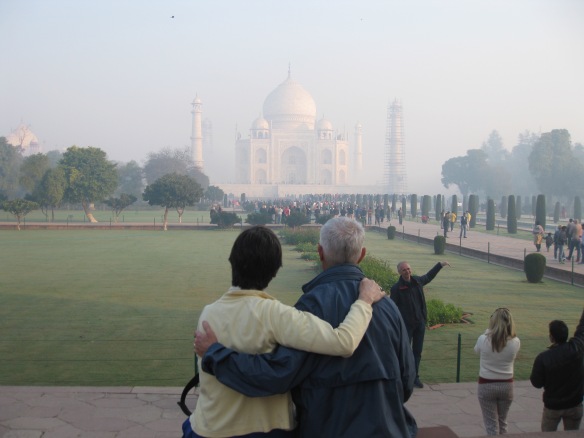One of the greatest day to day challenges of getting to the hospital to volunteer was transportation to and from the guest apartment. There was not really the option to walk, or bike for 8 kilometers. I tried auto rickshaws, an easily maneuverable three wheeled vehicle—it is quick but usually requires price negotiation with the drivers. My apartment mate, Anne, was good to take me on the buses when she was in town or when we left the hospital at the same time. The bus is clearly my preference.
an easily maneuverable three wheeled vehicle—it is quick but usually requires price negotiation with the drivers. My apartment mate, Anne, was good to take me on the buses when she was in town or when we left the hospital at the same time. The bus is clearly my preference.
But how to determine which bus is mine when Anne is not with me? The buses are not numbered, and Malayalam bus placards did not have a recognizable word for me.
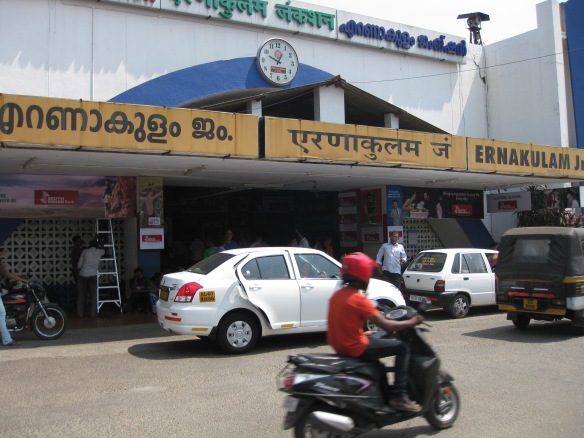
Malayalam, Hindi and English script
At first, I just got on the buses with a notebook –with my destination written in Malayalam. That did not work, as I usually got on the wrong bus. The conductor sucked his teeth (a universal communication tool) and had me get off at the next stop.
The next strategy worked like a charm. I should have known that “relationship” is the key. Anne had been very social at the bus stop. I smiled at these bus friends at the bus stop and asked them, with my destination written down in Malayalam to make sure that I got on the right bus. As long as I am out there by the 8:05 AM bus, I was in the chips.
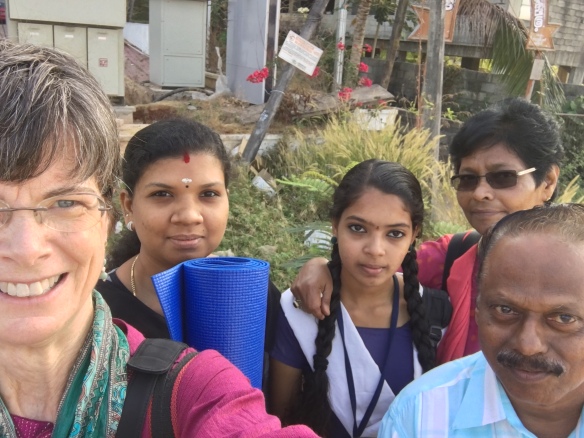
Inbound bus friends: Dhanya, Punyia, Anne, and Revi
It worked well. One time, the conductor tapped my shoulder to have me get off at a hospital on the way, and there was a chorus from my bus friends seated distantly from me that he was mistaken about my stop. Then Revi looked for me every morning.
Getting home was more challenging but equally charming. Chaithanya Mohandas, (a web designer with Leonine Info Solution located right at West Fort) was very happy to help me get on the crowded 5:15 bus. Once, through mass motion only understood by a bus passenger, I got moved toward the front of the bus away from the door. When it was approaching time for me to get off, I started to move toward the door with my yoga mat catching on everyone’s clothes and purses. Amazingly I got off that bus, rumpled but intact. The next time I got the bus with Chaithanya, she parked me right where she could guard me against movement down the bus aisle.

Outbound bus stop friend, Chaithanya
Why do I prefer to take the bus? In part, it is the higher viewpoint, away from the exhaust. But more important, it is the connection with the every day, the unexpected, the hilarious. I am more apt to see the fruit stand, the cricket game, bananas sticking out of a rickshaw, regular people on their way to work looking fresh in saris…6 days a week. From that vantage point, I see whole families on motorcycles (not hilarious). And then there is the time that an elephant went by in a truck.
It is a little restrictive to ONLY know how to travel back and forth at a certain time. I decided to take yoga-which is only offered at 6:15 AM and 6:15 PM. I like the 6:15AM yoga-doing the sun salutation with 30 Keralites on a rooftop is a peaceful way to start the day. Along came Vijay-a rickshaw driver who was willing to come at early hours to get me to yoga on time or pick me up at night. No haggling—he had a set price for going the 8 kilometres—a price that was worth it to make it to yoga.
![IMG_0486[1]](https://annbroderick.files.wordpress.com/2016/02/img_048612.jpg?w=201&h=270)
Vijay drives so smoothly that I can drink coffee
Thank you to my friends—Anne, Dhanya, Punyia, Chaitanya, Revi and Vijay. You made life work.
Oh, and happy leap day birthday to my childhood friend, Andy Tuthill, who has had 15 birthdays.
Breathe!

Yoga at Kovallum Beach (I am not there…yet)
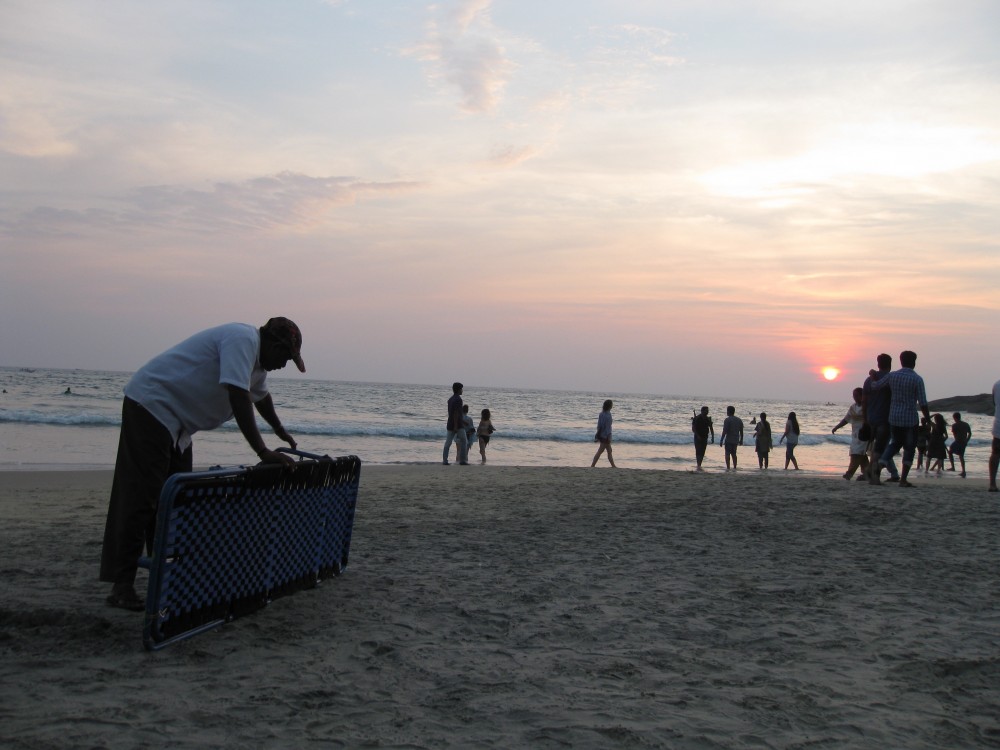
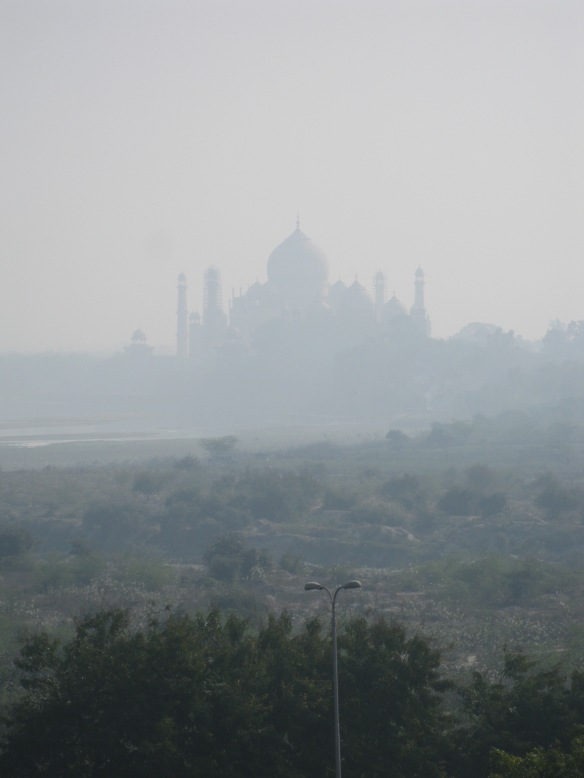 and then again at sunset from across the river.
and then again at sunset from across the river.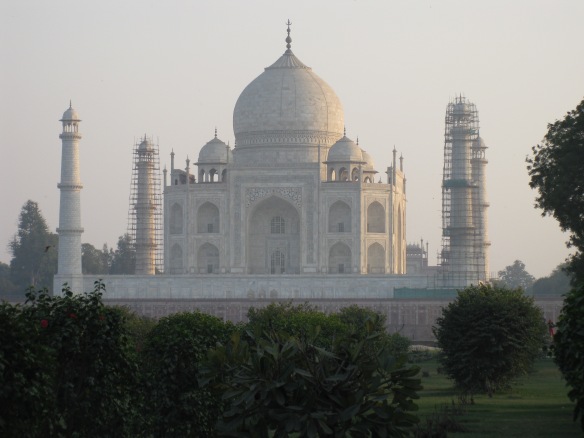 Even the guide joked that my husband wanted to make sure it was still there. We got up early to see it in the early morning light on Saturday.
Even the guide joked that my husband wanted to make sure it was still there. We got up early to see it in the early morning light on Saturday.


